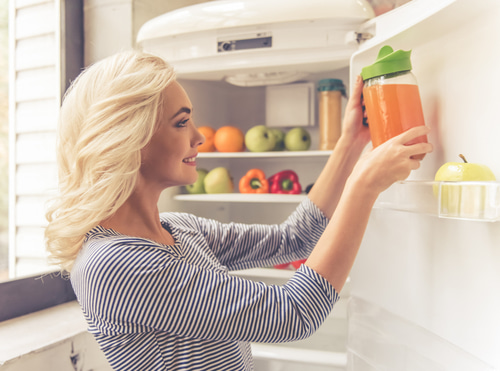Blog
Tips for keeping your fridge clean and organised

Keeping a clean and organized refrigerator is not only essential for proper food preservation but also makes accessing ingredients easier and contributes to a more efficient kitchen. A well-organized fridge can reduce food waste, save time during meal prep, and improve hygiene in the kitchen. Here are some practical tips from Kuoko to achieve and maintain a spotless refrigerator.
Clean deeply on a regular basis
Cleaning is the first step toward an organized fridge. Perform a deep cleaning at least once a month. Empty the fridge and remove all items, discarding any expired or spoiled food. Clean the interior surfaces with a solution of warm water and baking soda to remove stains and odors. Be sure to clean shelves and drawers separately. Regular cleaning prevents bacteria and mold buildup, ensuring a healthier environment for your food.
Use transparent and labeled containers
One key to maintaining fridge organization is using transparent containers. These allow you to easily see the contents without opening each one. Additionally, make sure to label the containers with the storage date. This helps with food identification and tracking what needs to be used before it spoils. Properly sealed containers also prevent liquid spills and odor transfer.
Organize food by categories
Grouping food into categories can be an effective way to keep your fridge tidy. For example, place fruits and vegetables in designated drawers, store meat on the lower shelves to prevent dripping onto other items, and put dairy products on the middle shelves where the temperature is usually more consistent. This organization avoids confusion and makes it easier to access the ingredients you need.
Implement a rotation system
A rotation system is essential to maximize food freshness. Place newer items at the back of the fridge and move older items to the front. This ensures that older products are used first and reduces the risk of spoilage. By maintaining this system, you can minimize food waste and ensure you’re always using fresh items. 
Adjust the temperature properly
The temperature of your refrigerator plays a key role in preserving food. Ensure the temperature is set to around 4°C (39°F) to keep food fresh. Regularly check the temperature with a thermometer to confirm your fridge is functioning properly. A proper temperature prevents bacterial growth and extends the shelf life of your food.
Avoid overloading the fridge
An overloaded fridge can hinder cold air circulation, affecting cooling efficiency and causing uneven temperature zones. Ensure you leave enough space between items to allow for proper air circulation. This not only helps maintain a consistent temperature but also makes it easier to access and organize food.
Use the doors for less sensitive items
The fridge doors are the warmest areas, so they’re ideal for storing less temperature-sensitive items like sauces, condiments, and juices. Avoid placing perishable items or dairy products in the doors, as temperatures here can fluctuate more than in other parts of the fridge.
Keep a food inventory
Maintaining a food inventory of what’s in your fridge can help avoid unnecessary purchases and better manage your resources. You can use a paper list or a phone app to track what you have and when it expires. This not only aids in organization but also contributes to better meal planning.
Use freezer bags for frozen foods
For items you need to freeze, opt for freezer bags instead of rigid containers whenever possible. Bags take up less space and adapt better to irregularly shaped foods. Additionally, make sure to label and date the bags for easier tracking of your freezer inventory.
Maintaining a clean and organized refrigerator doesn’t have to be a daunting task. With these practical tips, you can achieve an efficiently organized fridge that helps you manage your food better and maintain a healthier kitchen environment.


